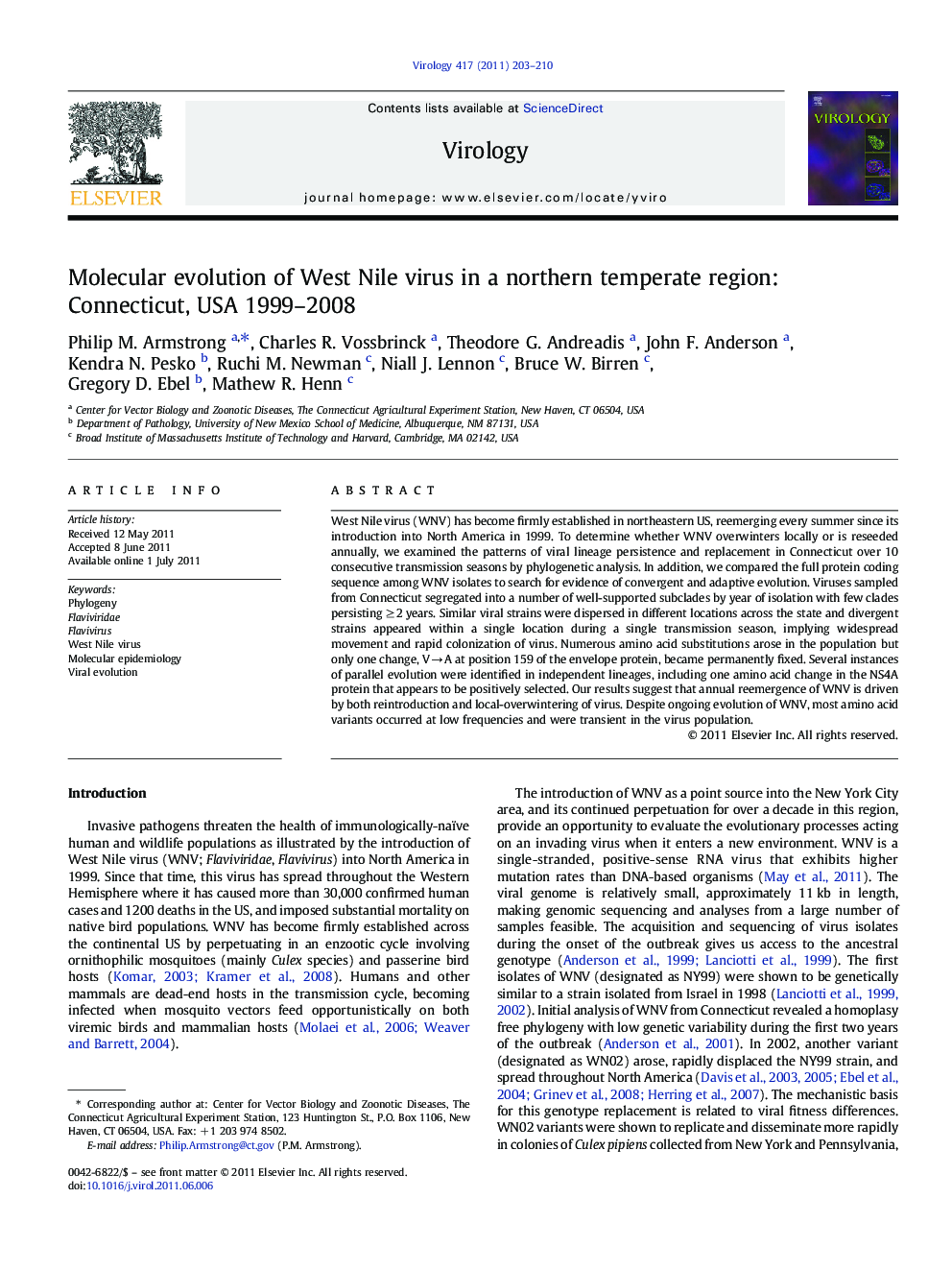| Article ID | Journal | Published Year | Pages | File Type |
|---|---|---|---|---|
| 3424641 | Virology | 2011 | 8 Pages |
West Nile virus (WNV) has become firmly established in northeastern US, reemerging every summer since its introduction into North America in 1999. To determine whether WNV overwinters locally or is reseeded annually, we examined the patterns of viral lineage persistence and replacement in Connecticut over 10 consecutive transmission seasons by phylogenetic analysis. In addition, we compared the full protein coding sequence among WNV isolates to search for evidence of convergent and adaptive evolution. Viruses sampled from Connecticut segregated into a number of well-supported subclades by year of isolation with few clades persisting ≥ 2 years. Similar viral strains were dispersed in different locations across the state and divergent strains appeared within a single location during a single transmission season, implying widespread movement and rapid colonization of virus. Numerous amino acid substitutions arose in the population but only one change, V → A at position 159 of the envelope protein, became permanently fixed. Several instances of parallel evolution were identified in independent lineages, including one amino acid change in the NS4A protein that appears to be positively selected. Our results suggest that annual reemergence of WNV is driven by both reintroduction and local-overwintering of virus. Despite ongoing evolution of WNV, most amino acid variants occurred at low frequencies and were transient in the virus population.
